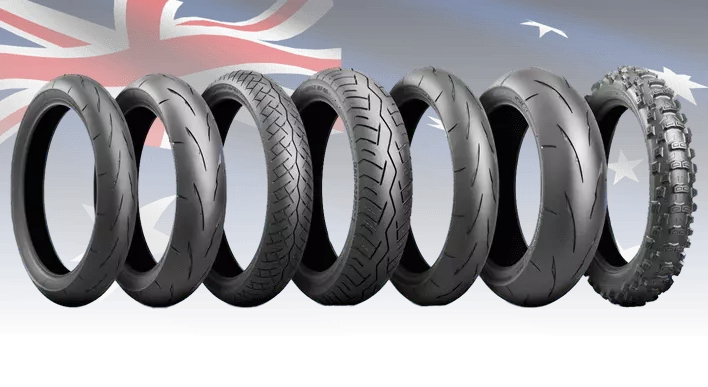All Regarding Motorbike Tyres: A Comprehensive Guide for Fanatics
For motorbike enthusiasts, comprehending the intricacies of their machine's tyres is a crucial facet usually neglected. This overview, 'Everything about Motorbike Tyres', unlocks the detailed globe of tire types, dimensions, and requirements, all straight influencing efficiency and security. It goes past simple expertise, giving workable pointers for upkeep, selection, and substitute. One can't aid but question what refined transformations this newfound wisdom could give their following adventure.
Understanding the Basics: Different Kinds of Motorcycle Tyres
In the globe of motorcycling, tyres play a crucial duty, not only in making sure a secure experience yet likewise in enhancing the total efficiency of the bike. They are available in various types, each designed for certain riding problems and performance demands.

Then there are dual-sport tyres, which provide a balance between on-road stability and off-road grip. Competing tyres, used for track racing, offer maximum grip yet have a very short life expectancy.
Comprehending these kinds and their particular functions helps riders choose the appropriate tire for their riding design and problems, consequently guaranteeing ideal efficiency and security. Such understanding forms the structure prior to diving into tire dimensions and specs.
Just How to Decipher Your Bike Tire Size and Specifications
Having a firm grasp on the different kinds of bike tyres leads normally to a deeper understanding of their sizes and requirements. This expertise is important for maintaining optimal efficiency and safety and security. The tyre's size and specs are generally shown on the sidewall. The first number stands for the width of the tyre in millimeters. The 2nd number, following a reduce, is the aspect proportion or the height of the tyre's sidewall expressed as a percentage of the width. The last number, if it's preceded by an 'R', suggests the rim size in inches.
Such detailed information can considerably affect a motorcycle's performance. Thus, it's crucial for riders to understand just how to translate their motorcycle tire dimension and specifications.
Selecting the Right Tire for Your Riding Style and Conditions
Picking the best tyre for your motorbike is not a choice to be ignored. It's essential to take into consideration the type of riding one does frequently; whether it's commuting, visiting, off-roading, or sports riding, each style demands a various kind of tyre. Sport motorcyclists may opt for performance tires that offer excellent hold and rate, while travelers may choose tires designed for longevity and comfort.
For damp and snowy problems, tires with deep step patterns and softer rubber compounds are suitable as they offer much better hold and traction. Inevitably, comprehending your riding design and the conditions you'll encounter aids in choosing the right tire, boosting both security and performance.
Tips for Preserving Your Bike Tyres for Ideal Performance
Correctly maintaining your motorbike tyres dramatically enhances their efficiency and long life. Routine evaluation is a vital part of this procedure. Bikers should search for indicators of deterioration, such as cuts, slits, or uneven wear patterns that might indicate positioning problems.
Cleansing is another crucial aspect of tyre maintenance. Eliminating debris and grime not only boosts the tyre's look however also prevents premature wear. A mild scrub with a soft brush and soapy water is normally enough.
The duty of tyre rotation can not be marked down. By alternating the tyres' settings, one can guarantee also wear and extend their lifespan.
Finally, the motorcyclist ought to constantly keep an eye on the tyre's tread deepness. A shallow walk can compromise grasp, bring about risky riding problems. To this end, many countries have lawful minimum step midsts, and motorcyclists are encouraged to follow these regulations for safety and security.
The Effect of Tyre Stress on Your Riding Experience

Recognizing Tyre Stress Dynamics
While it could appear an unimportant factor to some, tyre stress plays a vital role in the total riding experience of a motorcycle. Over-inflated tires can make the adventure extreme and rough, while under-inflated tires can lead to bad handling and boosted fuel intake. Tire pressure also influences the tyres' get in touch with spot - the area of the tire that touches the ground.
Adjusting Pressure for Performance

(Best Motorcycle Tyre Brands NZ)The perfect stress differs with tons, roadway condition, and riding design. For ideal performance, it's crucial to consult the producer's referrals, typically etched on the motorbike or in the owner's manual.
Regular checks using a trustworthy stress scale are essential. As weather condition affects stress, changes should be made when tyres are cool. Hence, understanding and applying correct tyre stress modifications significantly enhance a motorcyclist's experience, promoting safety and security and performance.
When and Exactly how to Change Your Motorcycle Tyres Securely
Making sure the security and performance of your adventure, regular assessment and prompt replacement of motorbike tyres is a job of utmost significance for every single bicycle rider.
Tyres should generally be replaced every five to 6 years, or when the walk reference depth reaches 2mm. Nevertheless, aspects such as driving routines, roadway problems and tire upkeep can influence this timeframe. It's vital to regularly evaluate tyres, searching for signs of damage, slits or deformities.
Changing a tyre needs special tools and knowledge. The new tire needs to be properly straightened and pumped up to recommended stress.
It is often suggested for much less knowledgeable bikers to have actually tires changed by experts. This guarantees safety and increases performance, emphasizing the value of tyre maintenance in motorbike usage.
Verdict
In conclusion, recognizing the complexities of motorcycle tyres, from types to dimension specifications, plays an important function in improving riding experiences. Making notified choices based upon riding design and conditions, combined with proper maintenance and awareness of tire stress, can dramatically boost efficiency and security. Last but not least, recognizing when and just how to change tires ensures cyclists can continue to enjoy their bike adventures with miraculous self-confidence.